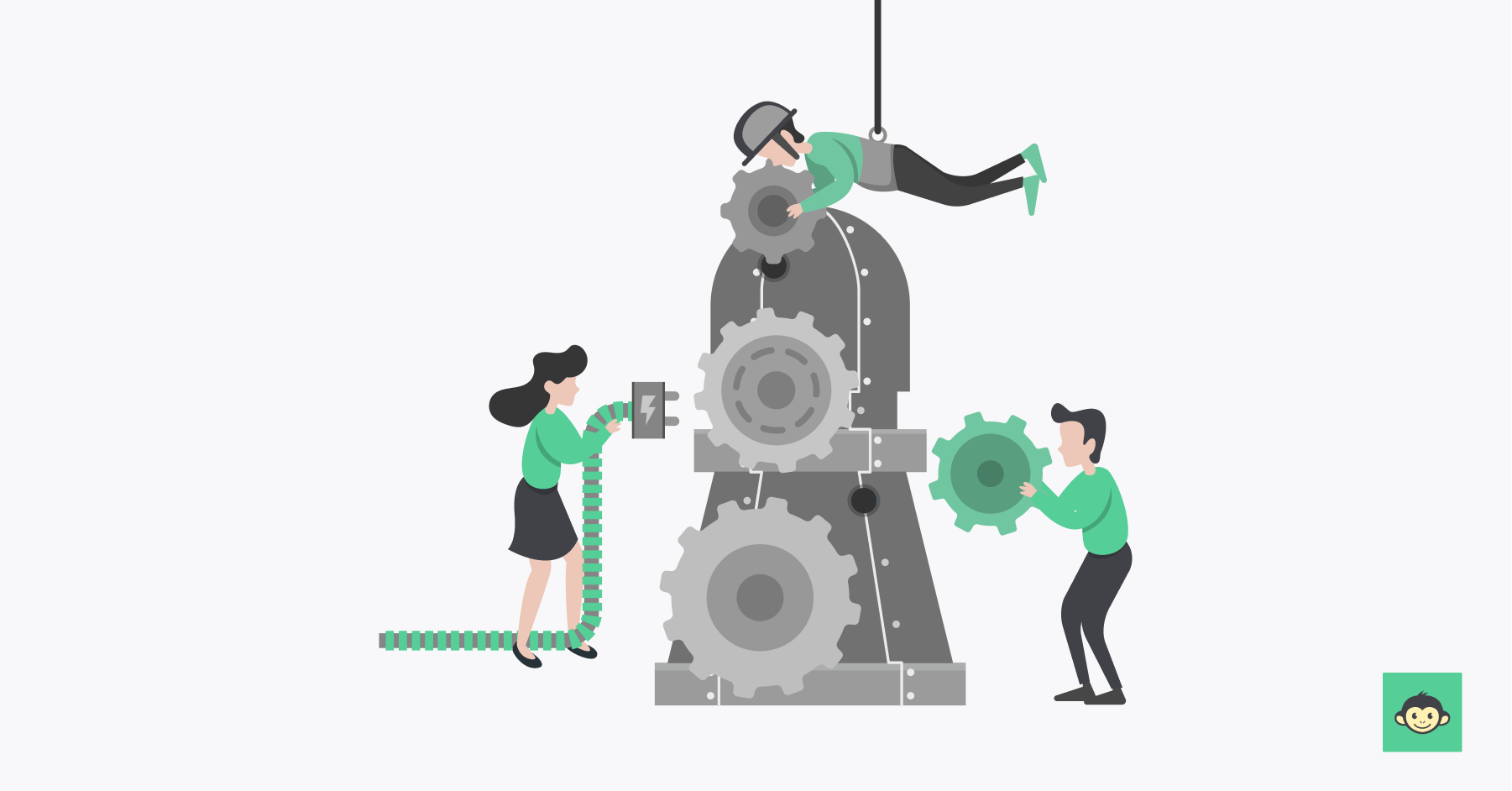13 Employee recognition ideas for manufacturing

Manufacturing employees are the unsung heroes of our economy, wouldn’t you agree? They are the backbone of most organizations and work tirelessly to produce the goods that make our lives better and our businesses successful.
Without them, the products we rely on every day would not exist. Yet, they often go unnoticed and unappreciated. That's why it's important to recognize and appreciate the hard work and dedication of manufacturing employees.
In this article, we'll dive into why manufacturing employees deserve recognition and how implementing an employee engagement program can make a difference in their lives and the success of your business.
Additionally, we'll provide you with some great creative employee recognition ideas that you can implement in your workplace to show your employees that you value and appreciate their contributions.
Table of contents:-
- What is employee recognition?
- Employee recognition vs. employee rewards
- What should employees be recognized for?
- How do you creatively recognize employees?
- What are the four types of recognition?
- How do you reward production employees, and is that enough?
- What is a good example of recognition in manufacturing?
- What is an employee recognition strategy example?
- How to measure employee recognition for your manufacturing employees?
- 13 Employee recognition ideas for manufacturing industry employees
- Conclusion
- FAQs
What is employee recognition?

Simply put, employee recognition is the act of acknowledging and appreciating an employee's efforts, contributions, and achievements in the workplace. This can take many forms, including verbal praise, written notes, public recognition, and awards.
Employee recognition is an essential aspect of employee engagement. When employees feel valued and appreciated, they are more likely to be satisfied with their jobs, perform better, and remain loyal to the organization. It shows employees that their work is valued and encourages them to continue performing at a high level.
Employee recognition vs. employee rewards

Let's dive a bit deeper into the difference between employee recognition and employee rewards.
Employee recognition is all about acknowledging and appreciating an employee's hard work and achievements. This can be done through verbal praise, written notes, public employee recognition awards, employee appreciation ideas, or other non-tangible forms of acknowledgment.
The focus is on recognizing the effort and dedication of the employee rather than providing a tangible reward. Employee recognition is essential because it helps to build a positive workplace culture and foster employee engagement.
On the other hand, employee rewards are typically tangible incentives given to employees in exchange for their performance. These can include bonuses, gift cards, extra time off, or other types of tangible rewards.
The focus is on providing a tangible reward in exchange for performance rather than simply acknowledging the effort and dedication of the employee. While rewards can effectively motivate employees in the short term, they may not have the same long-term impact as showing employee appreciation and recognition.
One of the key differences between recognition and rewards is the perception of authenticity. Employee recognition is often viewed as more meaningful recognition authentic than the employee experience of rewards.
Employees may view rewards as a transactional exchange, where they are only performing for the reward rather than for the satisfaction of doing a good job. Recognition, on the other hand, is seen as more genuine and authentic, as it focuses on the employee's effort and dedication rather than a tangible reward.
Another difference between recognition and rewards is the impact on employee motivation and engagement. While rewards can be effective in motivating employees in the short term, they may not have a different long-term impact than recognition.
When employees can feel appreciated, recognized, and valued for their work, they are more likely to be engaged and motivated to continue performing at a high level.
Recognition helps to create a positive workplace culture where employees feel appreciated and valued, leading to higher levels of engagement and productivity.
The bottom line is – employee recognition and employee rewards are both important components of a successful employee engagement strategy. Recognition focuses on acknowledging and appreciating the effort and dedication of employees, while rewards are tangible incentives given in exchange for performance.
While rewards can be effective in motivating employees in the short and long-term, recognition is seen as more authentic. It has a more lasting and positive impact on employee motivation and engagement.
By incorporating both recognition and rewards into your employee engagement strategy, you can create a workplace that is and appreciates its employees, leading to a more successful and productive business.
What should employees be recognized for?

Employees can be recognized for a wide range of achievements and contributions to the workplace. Some examples of employee achievements might include:
Consistently meeting or exceeding performance goals:
This is a classic achievement that employees can be recognized for. By giving recognition to employees who consistently meet or exceed their performance goals, you are reinforcing the importance of productivity and setting a standard for others to strive towards.
Demonstrating exceptional teamwork or collaboration skills:
Teamwork and collaboration are essential components of any successful business. Offering recognition to employees who excel in these areas helps to encourage employees to reinforce the importance of working together towards a common goal. It encourages other employees to do the same.
Showing initiative and creativity in problem-solving:
Problem-solving is a critical skill in any workplace, and acknowledging employees who demonstrate creativity and initiative in this area can help to foster a company culture of innovation and continuous improvement.
Going above and beyond in their duties or responsibilities:
When your employees choose to go above and beyond in their duties or responsibilities, it's important to recognize and reward that effort. Doing so not only acknowledges their hard work but also encourages them to continue striving for excellence in the future.
Providing exceptional customer service:
Providing exceptional customer service is key to building a loyal customer base, and giving acknowledgment to employees who consistently go above and beyond in this area can help to reinforce the importance of customer satisfaction.
Consistently demonstrating the company's core values:
Every company has its own set of core organizational values, and recognizing employees and senior leaders who consistently embody those company values can help to reinforce their importance and create a culture that aligns with those values.
Making significant contributions to a project or initiative:
When an employee makes a significant contribution to a project or initiative, it's important to acknowledge their hard work and recognize the positive impact they have had on the success of the leadership team and the business.
Doing so helps to reinforce the importance of teamwork and collaboration and encourages others to contribute in a meaningful way as well.
How do you creatively recognize employees?

There are many creative ways to recognize employees that go beyond traditional methods like verbal praise or written notes. Now, while traditional methods of recognition, such as verbal praise or written notes, are certainly effective, there are also many creative ways to recognize employees that can have an even greater impact.
Personalized Gifts
One way to recognize employees creatively is by giving them personalized gifts or experiences. This could include a gift certificate to their favorite restaurant or coffee shop, a day off to pursue a hobby they enjoy or a personalized gift that shows you appreciate them as an individual.
By taking the time to get to know your employees and their interests, you can demonstrate that you value them as more than just a worker.
Public Recognition
Another way to recognize employees creatively is by giving them public recognition for major accomplishments. This could include recognizing them in a company meeting, newsletter, or social media post. Public recognition not only acknowledges the employee's hard work and dedication but also motivates other employees to strive for similar achievements.
Flexibility
Flexibility is another way to recognize employees creatively. Consider offering employees more flexibility in their work schedule or job responsibilities as a form of recognition.
For example, you might allow them to work from home one day a week or give them the opportunity to lead a project they are passionate about. By offering employees more flexibility, you can demonstrate that you trust and value their contributions to the company.
Team Outings
Team outings or activities are also a great way to recognize employees creatively. Consider organizing team outings or activities that allow employees to bond and have fun outside of work.
This can help to boost morale and create a positive team dynamic, which can lead to increased productivity and collaboration in the workplace.
Personal Development Opportunities
Consider offering employees professional development opportunities as a form of recognition. This could include paying for them to attend a conference or providing them with a mentorship opportunity.
By investing in your employees' professional development, you not only recognize their hard work and dedication, but also help to prepare them for future opportunities within the company.
What are the four types of recognition?

Now that we’ve seen what are the ways to creatively recognize employees, let’s see more about the types of employee recognition out there.
In general, there are four types of employee recognition that organizations can use to reward employees acknowledge their employees' contributions:
Formal recognition
The first is formal recognition, which typically takes the form of an award ceremony or a promotion. Formal recognition is an excellent way to highlight outstanding performance and reinforce the values of the organization.
Informal recognition
The second type of recognition is informal or peer to peer recognition only, which is more personal and spontaneous. Informal recognition can take the form of verbal praise, personal gift, or a thank-you note. It is a powerful tool for building relationships between managers and employees and fostering a sense of appreciation.
Tangible recognition
The third type of recognition is tangible recognition, which involves providing employees with a physical reward. This could be a gift card, a company logo-branded item, or a monetary reward. Tangible recognition is a great way to show employees that their hard work and dedication are valued and appreciated.
Intangible recognition
The fourth and final type of recognition is intangible recognition, which involves providing employees with non-physical rewards. This could include providing flexible work hours or an opportunity for professional development. Intangible recognition is a great way to support employees' growth and development and show that the organization is invested in their success.
How do you reward production employees, and is that enough?

Rewarding production employees can be done in a variety of ways. For example, a production manager could offer employees a bonus for achieving specific production targets or provide them with opportunities for career advancement. In addition, recognizing employees for their hard work can go a long way in boosting morale and productivity of entire team.
But that ain’t enough. Like we had discussed in the reward vs recognition section, both should always go hand-in-hand.
It is essential that we listen to the voice of manufacturing employees. But even that ain’t easy, as most manufacturing employees work on a contract basis and hardly have a mechanism to voice their concerns to the direct managers.
This is where a continuous listening mechanism needs to be established for your blue-collar employees, so that their voice is heard and their employee recognition concerns are turned into actionable to improve retention rates.
What is a good example of recognition in manufacturing?

A good example of recognition is when a company acknowledges an employee's contributions to a project or achievement.
For instance, a manufacturing company could recognize an employee who developed a new, more efficient production process by presenting them with a certificate of achievement and a personalized gift, thereby giving others the motivation to be more productive and happy working for the company.
What is an employee recognition strategy example?

An employee recognition strategy is when a company sets up a whole recognition program, that includes different forms of recognition for employees and plan to hit a certain positive outcome that improves the overall performance and happiness of the employees.
For example, the employee recognition program could involve formal recognition through an annual awards ceremony, informal peer recognition, through regular employee feedback sessions, tangible recognition through company-branded merchandise, and intangible recognition through flexible work hours or professional development opportunities.
How to measure employee recognition for your manufacturing employees?

Measuring employee recognition in a manufacturing setting is crucial for assessing the effectiveness of your recognition programs and ensuring that your employees feel valued and appreciated. Here are some steps you can take to measure employee recognition:
Define clear recognition objectives: Start by setting specific goals for your recognition efforts. What outcomes do you want to achieve? Examples could include improving employee morale, increasing productivity, or reducing turnover. Clear objectives will help you measure your progress accurately.
Implement a recognition tracking system: Establish a system to track and record instances of employee recognition. This can be done through various means, such as online platforms, performance management software, or even a simple spreadsheet. Ensure that the system allows you to capture details like the date, type of recognition, recipient, and the person or department providing the recognition.
Establish performance metrics: Identify key performance indicators (KPIs) that align with your recognition objectives. These metrics could include employee engagement scores, productivity levels, attendance rates, or retention rates. By tracking these metrics over time, you can assess the impact of recognition efforts on these areas.
Conduct employee surveys: Regularly survey your manufacturing employees to gather their feedback on the effectiveness of the recognition programs. Ask questions about their perceptions of recognition, whether they feel appreciated, and if the programs motivate them. This feedback will provide valuable insights and help you identify areas for improvement.
Analyze employee turnover and absenteeism: High employee turnover or absenteeism rates can be indicators of dissatisfaction or lack of recognition. Monitor these metrics and correlate them with your recognition efforts. If you notice a correlation, it suggests that you may need to enhance your recognition programs to address these issues.
Review qualitative feedback: In addition to quantitative data, collect qualitative feedback from employees through interviews, focus groups, or suggestion boxes. This feedback can shed light on individual experiences and provide valuable insights into how recognition efforts impact employee morale and satisfaction.
Benchmark against industry standards: Compare your recognition efforts with industry best practices and benchmarks. Look for industry surveys, reports, or case studies that provide insights into effective recognition programs in manufacturing. This can help you evaluate your performance against similar organizations and identify areas for improvement.
Continuous improvement: Use the data and feedback gathered to make informed decisions about enhancing your recognition programs. Consider adjusting your employee engagement strategies, implementing new initiatives, or expanding existing programs based on the insights gained. Regularly revisit your measurement process to ensure it remains relevant and aligned with your goals.
Remember, employee recognition goes beyond metrics and data. It's important to create a positive work culture where recognition is embedded in day-to-day interactions and becomes part of your organization's DNA.
13 Employee recognition ideas for manufacturing industry employees

Read on for the CultureMonkey employee recognition ideas!
Offer flexible work hours or telecommuting options
Consider allowing employees to have more control over their schedules or giving them the option to work remotely. This can be especially valuable for employees who have family or personal obligations that may require a more flexible work schedule.
Provide training opportunities for career advancement
Providing opportunities for employees to learn new skills and advance their careers can be a great way to show that you value their contributions and are invested in their long-term success.
Also check out - How workyard's construction training management helps improve employees development skills".
Celebrate birthdays or work anniversaries with a personalized gift
Recognizing an employee's birthday or work anniversary with a personalized gift can be a great way to make them feel valued and appreciated as an individual.
Recognize employees publicly through social media or company newsletters
Give your star employees social media shout outs! Recognizing employees publicly through social media or company newsletters can help to boost morale and show that their contributions are valued and recognized by the company as a whole.
Host an annual awards ceremony to recognize outstanding employees
Host an annual awards ceremony to recognize outstanding employees: An annual awards ceremony is a great way to recognize outstanding employees and celebrate their achievements in front of their peers and management team members.
Provide financial incentives or bonuses for achieving production targets
Providing financial incentives or bonuses can be a great motivator for employees to achieve production targets and reach their goals.
Offer paid time off for volunteer work
Offering paid time off for volunteer work can be a great way to show that the company values community involvement and encourages employees to give back.
Allow employees to take on leadership roles in projects
Allowing employees to take on leadership roles in projects can be a great way to recognize their skills and abilities, and to provide them with new opportunities for growth and development.
Recognize employees for going above and beyond their job duties
Recognizing employees who go above and beyond their job duties can help to create a company culture full of excellence and encourage others to do the same.
Offer a wellness program that includes fitness classes or healthy snacks
Offering a wellness program that includes fitness classes or healthy snacks can help to promote employee health and wellbeing, and show that the company cares about its employees' overall health and happiness.
Provide mentorship opportunities to support employee development
Providing mentorship opportunities can be a great way to support employee development and growth, and to show that the company is invested in their long-term success.
Offer tuition reimbursement for continuing education
Offering tuition reimbursement for continuing education can be a great way to support employee development and growth, and to help them advance their careers within the company.
Host team-building activities or outings
Hosting team-building activities or outings for remote employees can help to build camaraderie among employees, promote teamwork, and create a positive workplace culture.
Conclusion
Recognizing and appreciating employees' hard work and dedication is crucial in any industry, including manufacturing. By implementing some of these creative employee recognition ideas, you can create a positive and productive workplace culture, leading to boost productivity, better customer service and increased employee satisfaction and retention.
Although recognition can not be improved, if we don’t measure it in the first place.
Enter CultureMonkey, a complete employee engagement platform that helps people leaders to listen to the employee recognition needs of your manufacturing employees, measure the existing employee satisfaction levels and recognition metrics and show you a complete picture of what needs to be improved in your organization to make your blue and white collar employees to feel more recognized and happy.
FAQs
Why is employee recognition important in the manufacturing industry?
Employee recognition is important in the manufacturing industry because it boosts employee morale, increases productivity, and improves employee retention rates.
What are some of the best ways to recognize manufacturing industry employees?
Creative ways to recognize manufacturing industry employees include offering flexible work hours, providing career advancement opportunities, hosting team-building activities, and offering wellness programs.
How can companies measure the effectiveness of their employee recognition programs?
Companies can measure the effectiveness of their employee recognition programs through employee feedback surveys, tracking employee turnover rates, and assessing the impact of recognition programs on productivity and morale.
How often should employee recognition occur?
Employee recognition should occur regularly and consistently throughout the year. It's important to avoid only recognizing employees on an annual basis during performance reviews. Instead, consider implementing a formal employee recognition program that includes regular opportunities for recognition, such as weekly or monthly. This can help to keep employees engaged and motivated and ensure that their hard work is consistently recognized.
How can I get employees involved in the recognition process?
One way to get employees involved in the recognition process is to create a peer-to-peer recognition program. This allows employees to recognize and appreciate their colleagues for their hard work and contributions to the workplace.
Consider implementing a system where employees can nominate their colleagues for a peer to peer recognition and then have those nominations reviewed by a committee or management, or team member.
This can help to support organizational values and create a positive workplace culture where employees feel valued and appreciated by their peers as well as their managers. Formulating an employee recognition program is also recommended. These metrics can help to determine the effectiveness of recognition programs and identify areas for improvement



